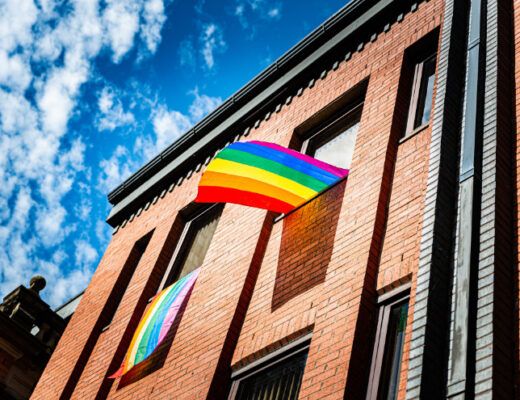By Aubrey F. Burghardt
The Zócalo, or main square in central Mexico City, has long served as a gathering place. The plaza was once a well-known ritualistic mecca in the Aztec city of Tenochtitlan, and acted as a cultural hub of sorts, a safe haven for smaller communities within the larger population.
In the Spring Branch neighborhood of Houston, Texas, another Zócalo exists—a luxury-living apartment complex that not only provides communal housing but a homestead of cultural and creative energy as well. The complex, with its brick façade, colorful urban art, and bright, welcoming doors, is the site of a groundbreaking on-site artist-in-residence program, which aims to encourage interaction between artists and residents, as well as to bolster local art and culture within the area’s predominantly Latinx community.
The Zócalo Artist-in-Residence Program, or ZAIR, will debut with its summer 2020 session, which will host three visual artists-in-residence (an artist duo, and two solo artists) who will live and work on-site to produce, create, discuss, and display artwork around the Zócalo campus. This year, one single-year and two six-month residencies were awarded for the inaugural season. The artists-in-residence were selected through a meticulous and rigorous online public voting session and evaluation by an esteemed slate of local curators and artists, and were granted cost-free living, exhibition space, and a monthly materials stipend.
Due to its sheer size—boasting over 200 independent units—the complex is astoundingly beneficial to artists who work in larger, exterior scales. The program encourages such artists to push the boundaries of their medium and to create installations for display on the exterior of the complex’s buildings and large central lawn.
This is particularly helpful for the art collective Input Output. The group, composed of Billy Baccam and non-binary Latinx artist Alex Ramos, was endowed a year-long placement from January 2020 through December 2020. The duo is dubbed a “creative lab that researches, designs, and develops digital experiences in physical spaces,” and is most known for its 2017 light projection onto Houston’s iconic “Be Someone” urban art installation that teeters over I-10 and 45.
ZAIR Program Director Ileana Yordan shares that “Houston is one of the most diverse cities in the nation, and there is plenty of room at Zócalo to create active space for LGBTQ artistic voices to be heard and represented. I’m particularly thrilled to have Input Output on our 2020 roster. . . As a creative duo, they have such a unique and innovative approach to art-making that can inspire and connect viewers through our universal sense of curiosity and wonder. This is precisely why they were chosen. Their work is exciting, dynamic, and creates experiences that transcend beyond limited social or political perspectives.”
I had the privilege of catching up with Ramos in late November 2019, to discuss how queerness informs their art production as an individual, as well as within their shared craft.
Aubrey Burghardt: How does your queerness lend itself to your production or craft?
Alex Ramos: Working in the emerging field of digital experience building, [I recognize] that adhering to a set of societal standards becomes limiting. Our approach to creating experiences is nonlinear, unconventional, and non-binary. Being queer directly translates to how we think about and deploy our pieces. We consider our methodology to be anti-disciplinary—looking at creation as a spectrum that can encompass various modalities of conceptualizing, creating, and experiencing. We don’t limit ourselves to the confines or parameters of the technology or geography we work within. We blur the lines between the conventional and the otherworldly.
What have you learned from your queerness? What has it taught you?
Every day is a lesson and in every moment there are opportunities to learn more about ourselves through the perspective of others. It is at the core of what we do. Each human is living a unique experience—we account for this variable as an integral part of our interactive piece. This human element provides a new and emerging way of engaging with the world. Coupled with the impermanence of the moment, we learn to give in and let go of control of what we may think our world will be and accept the notion that we are all creative at heart.
How did you find out about Zócalo? Why is the program a great fit for your artwork?
We found out about Zócalo through social media. Our artwork would lack its key element without a community to engage with. This opportunity to join an already thriving community gives us a front-row seat at incorporating the human element into our pieces more organically. We strive for an open invitation to co-create as they engage with our pieces.
What works are you hoping to produce while in the residency?
We engage the human story to [create] interwoven stories that are driven by the data that makes us human. We are hoping to tap into the fountain of knowledge embedded in the DNA of our daily interactions. We hope to give tangible, data visualizations that provide a new perspective of the human condition.
Look forward to a solo exhibition by Input Output in December 2020. Keep up with the collective’s work on Instagram. To learn more on the Zócalo Artist-in-Residence Program, check out their Instagram and website.







